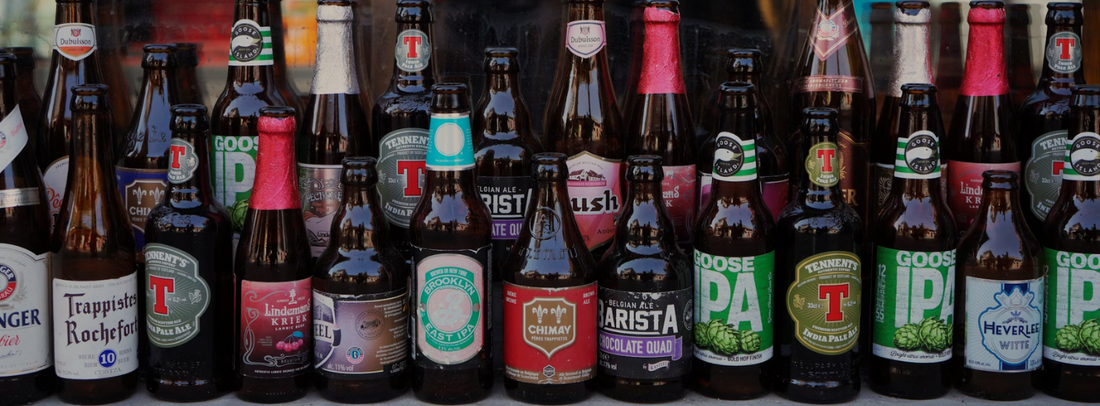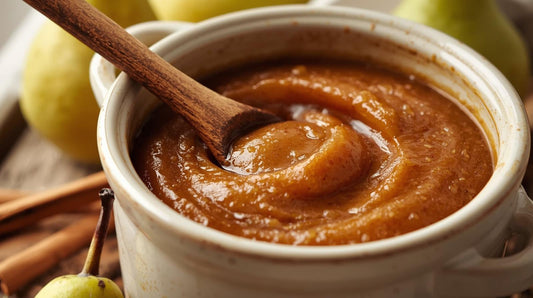Beer is one of the world’s oldest and most beloved beverages enjoyed everywhere from cozy local pubs to international festivals. Yet with so many varieties, understanding what makes one beer different from another can be confusing.
In this guide, we’ll break down the main types of beer based on flavor, color, origin, and production methods, helping café, bar, and restaurant owners better understand their selections.
- Guide to Purchase the Best Drink Carrier for Your Business
- What Are Well Drinks? Why Well Drinks Perfect For Happy Hour Menu?
- Top 12 Most Famous Cocktails in The World
- How Long Does Alcohol Expire? A Guide to the Shelf Life of Liquor
Understanding Beer Classification

Beer classification helps identify and describe beers by key characteristics such as taste, color, ingredients, and brewing technique. The most common method worldwide is based on production type, which determines fermentation style and flavor profile.
However, other criteria like color and origin also add depth to how we appreciate different brews. Let’s explore them all.
Types of Beer by Flavors
Beer flavors are complex and multifaceted, influenced by a variety of factors including malt, hops, yeast, and additional ingredients. Here are common types of beers categorized by taste:
| Flavor Type | Characteristics | Common Styles |
|---|---|---|
| Hoppy | Bitter, citrusy, piney aromas. Hop-forward and refreshing. | India Pale Ale (IPA), Double IPA |
| Malty | Sweet, toasty, caramel-like flavors from malt. | Stouts, Brown Ales, Porters |
| Fruity | Natural fruit esters or added fruit for tropical or berry notes. | Wheat Beers, Belgian Ales, Fruit IPAs |
| Sweet | Rich, dessert-like; residual sugars or added syrups. | Barleywine, Cream Ale |
| Sour | Tart, tangy, often fermented with wild yeast or bacteria. | Gose, Berliner Weisse, Lambic |
| Balanced | Harmonious blend of hops and malt; easy-drinking. | Pilsners, Pale Ales, Lagers |
Types of Beer by Color
Color gives the first impression of a beer and hints at its flavor intensity. It mainly depends on the type and roast level of malt used in brewing.
| Color Category | Description | Common Examples |
|---|---|---|
| Light (Pale) | Straw to golden; crisp, refreshing taste. | Pilsner, Blonde Ale, Kölsch |
| Amber | Copper to red hue; moderate malt sweetness. | Amber Ale, Vienna Lager, Red Ale |
| Dark | Deep brown to near black; roasted, caramelized flavors. | Porter, Brown Ale, Dunkel |
| Black | Opaque and full-bodied; notes of coffee and cocoa. | Stout, Imperial Stout, Schwarzbier |
Type of Beer by Geographic Origin
Beer traditions differ around the world. Each region’s climate, water, and culture shape unique brewing styles:
| Region | Famous Styles | Flavor Highlights |
|---|---|---|
| Germany | Pilsner, Hefeweizen, Dunkel, Kölsch | Crisp, balanced, highly carbonated |
| Belgium | Trappist Ale, Witbier, Saison | Spiced, fruity, often bottle-conditioned |
| United Kingdom | Bitter, Porter, Stout | Malty, earthy, smooth |
| United States | IPA, Pale Ale, Craft Lager | Hop-forward, innovative, experimental |
| Czech Republic | Czech Pilsner, Dark Lager | Mild bitterness, rich malt base |
| Japan | Rice Lager, Fruit Ale | Light body, clean and subtle sweetness |
Understanding beer by region helps restaurants and bars curate authentic drink menus and pair beverages with regional cuisines.
Types of Beer by Production Method
Classifying beer by production method is the most common approach as it directly influences the flavor, alcohol content, and other characteristics of the beer. Beer production primarily focuses on two key factors: the type of yeast used in fermentation and the temperature at which fermentation occurs. Based on these factors, beers are generally categorized into three main types
- Ales: Top-fermented beers known for their complex flavors and often fruity or hoppy characteristics.
- Lagers: Bottom-fermented beers typically characterized by a clean, crisp taste.
- Hybrids: Beers that combine elements of both ales and lagers.
In the following section, we will delve deeper into this classification system and explore the unique characteristics of each beer type
Classification of Type of Beers by Production Methods
As mentioned above, production method impact directly to flavors, color and other characteristics of beers. In this section, we will delve into 3 styles of beer classified by production methods and their features.
Ales
Production Process: Ales are produced through top-fermentation, employing yeast strains that thrive in warmer temperatures (around 15-25°C or 59-77°F). These yeast strains are characterized by their ability to flocculate (clump together) rapidly, rising to the top of the fermentation vessel.
Characteristics: Ales often exhibit complex flavors with fruity, floral, or malty notes. They can vary widely in color, from pale to dark, and alcohol content.

Common Beer Styles:
- Pale Ales: These beers exhibit a balance of malt and hop characteristics. English Pale Ales tend to be meltier, while American Pale Ales showcase more pronounced hop flavors. India Pale Ales (IPAs) are intensely hopped, offering a spectrum of bitter, citrusy, or tropical fruit aromas and flavors.
- Stouts: Dark and robust, stouts are known for their rich, roasted malt flavors. Dry Stouts are leaner with a coffee-like character, while Sweet Stouts are creamier with notes of chocolate and caramel. Imperial Stouts are exceptionally strong and complex.
- Porters: Similar to stouts but generally less robust, porters offer a balance of sweet and roasty flavors.
- Wheat Beers: Light and refreshing, wheat beers emphasize the flavor of wheat grains. Witbiers are Belgian wheat beers featuring citrus and spice notes, while Hefeweizen is a German style known for banana and clove-like characteristics.
Lagers – The Most Common Type of Beer
Production Process: Lagers are produced through bottom-fermentation, using yeast strains that prefer cooler temperatures (around 5-13°C or 41-55°F). These yeast strains tend to flocculate more slowly, settling at the bottom of the fermentation vessel. Lager brewing often includes a cold maturation period, known as lagering.
Characteristics: Lagers generally have clean, crisp flavors with a balanced maltiness and hop bitterness. They are often lighter in color and lower in alcohol content compared to ales.

Common Beer Styles:
- Pilsners: Known for their crisp, clean character and balanced hop bitterness, Pilsners are divided into Czech and German styles. Czech Pilsners are typically drier with pronounced hop aroma, while German Pilsners tend to be slightly maltier.
- Lagers: A broad category encompassing various styles, lagers are generally light-bodied and easy-drinking. American Lagers are often used as a base for other styles, while Malt Lagers offer a slightly sweeter profile.
- Bocks: Stronger and maltier than regular lagers, bocks are characterized by their sweet, caramel-like flavors. Doppelbocks are even stronger versions with richer character.
- Dunkel: Dark lagers with a roasted malt character, offering a balance of sweetness and bitterness.
Hybrid Beers: Innovation Meets Balance
Hybrid beers combine elements of both ale and lager brewing processes, creating unique and often experimental styles. The production methods vary widely within this category, making it difficult to generalize. However, many hybrid beers utilize ale yeast strains but ferment at cooler temperatures, similar to lagers.
Characteristics: Hybrid beers can exhibit a wide range of flavors, combining elements of both ales and lagers. Their appearance and alcohol content also vary significantly.

Common Beer Styles:
- Cream Ale: A light and refreshing beer with a clean, crisp flavor profile.
- California Common: A hybrid of ale and lager characteristics, often exhibiting a balanced maltiness and hop bitterness.
- Fruit Wheat Ale: A wheat beer infused with fruit flavors, such as raspberry or blueberry.
How Production Methods Affect Beer Character
| Feature | Ales | Lagers | Hybrids |
|---|---|---|---|
| Yeast Type | Top-fermenting (warm) | Bottom-fermenting (cold) | Mix of both |
| Fermentation Temp | 59–77°F (15–25°C) | 41–55°F (5–13°C) | Variable |
| Flavor Profile | Fruity, robust | Clean, crisp | Balanced, experimental |
| Color Range | Pale to dark | Mostly light to amber | Wide range |
| Alcohol Content | Moderate–High | Low–Moderate | Variable |
| Serving Suggestion | Best slightly cool (45–55°F) | Chill well (40–50°F) | Mid-range (45–52°F) |
FAQ: Understanding Beer Types
What are the main types of beer?
Most beers fall into three categories: ales, lagers, and hybrids, depending on yeast fermentation and temperature.
What’s the difference between ale and lager?
Ales use top-fermenting yeast at warmer temperatures, creating fruity, bold flavors. Lagers use bottom-fermenting yeast at cooler temps for a crisp, clean finish.
Which beer is the lightest to drink?
Pilsners, blonde ales, and wheat beers are great for beginners or casual drinkers who prefer light, refreshing taste.
What beer types are best for food pairing?
- Pale Ale → grilled meats, burgers
- Stout → chocolate or rich desserts
- Wheat Beer → seafood or salads
- Lager → fried snacks or pizza
Conclusion
Beer may come in endless varieties, but every brew tells a story from the fruity depth of a Belgian ale to the clean sparkle of a pilsner. Understanding these classifications helps bar owners, restaurateurs, and beer lovers serve each glass at its best.







